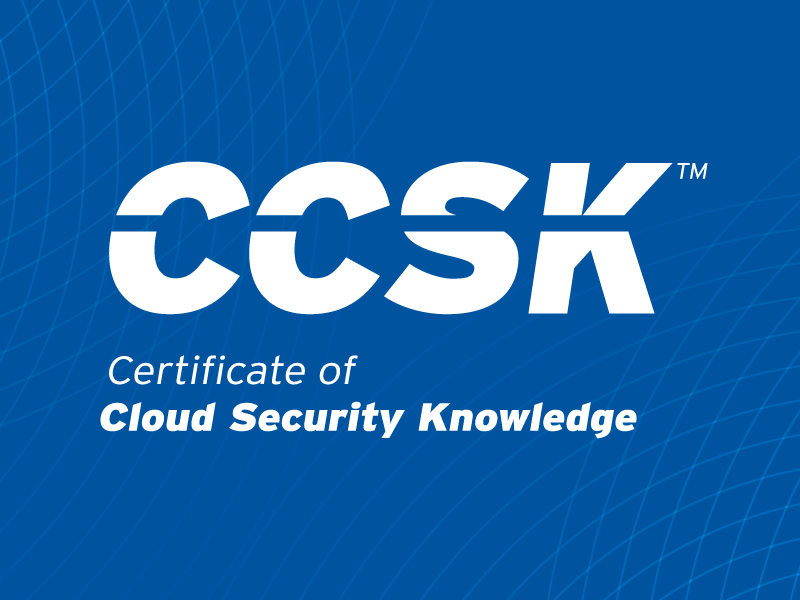Inadequate Database Security: A Case Study of the 2023 Darkbeam Incident
Published 08/04/2025
CSA’s Top Threats to Cloud Computing Deep Dive 2025 reflects on eight recent real-world security breaches. The report presents the narrative of each incident, as well as the relevant cloud security risks and mitigations. Today we’re reflecting on the fifth incident covered in the Deep Dive: Darkbeam 2023.
Bob Diachenko, CEO of SecurityDiscovery, uncovered a public exposure of Darkbeam’s Elasticsearch and Kibana interface. This exposure was the result of human error—a misconfiguration, likely during deployment or maintenance. Darkbeam had bound the interface to a public-facing IP address without authentication, allowing unrestricted access. This created an opportunity for exploitation by threat actors.
The exposed dataset contained sensitive information, including email-password combinations. Darkbeam may have stored some of them in plaintext or weakly hashed them. Threat actors could have easily discovered the exposed interface using automated scanning tools. These tools routinely identify misconfigured services exposed on the internet.
No one has confirmed evidence of data exfiltration. However, the system potentially exposed over 3.8 billion email-password combinations. Malicious actors could have discovered the database and harvested the credentials.
Top Threats in Action
Several Top Threats contributed to this incident.
A failure to follow database security best practices was the primary cause (Top Threat #1: Misconfiguration). Misconfigurations are the incorrect or sub-optimal setup of cloud computing assets that can leave them vulnerable. Some common ones are:
- Inadequate secrets management
- Disabled monitoring and logging
- Leaving ICMP open
- Insecure automated backups
- Inadequate storage access controls
- Lack of validation
- Unlimited access to non-HTTPS/HTTP ports
- Overly permissive access to virtual machines, containers, and hosts
- Enabling too many cloud access permissions
- Subdomain hijacking
Additionally, Darkbeam personnel failed to apply adequate Identity and Access Management (IAM) security measures (Top Threat #2: IAM). This made the Elasticsearch instance publicly accessible. IAM controls ensure individuals only get access to resources after proving who they say they are. This system is pivotal in defining and managing user roles and access privileges.
Darkbeam also used cloud-hosted systems without proper safeguards. This amplified the potential for a data breach (Top Threat #7: Accidental Data Disclosure). The risk of accidental data disclosure grows yearly. These risks exist across Amazon, Azure Blob, GCP Storage, Docker Hub, Redis, GitHub, and Elasticsearch.
Lastly, the misconfigured system included email-password combinations sourced from previous breaches. This made the system a high-value target (Top Threat #8: System Vulnerabilities). System vulnerabilities are flaws in cloud service platforms that threat actors can exploit. Vulnerabilities in custom software, third-party services, and operating systems frequently leave cloud services susceptible to cyber attacks.
Dealing with system vulnerabilities requires:
- Continuous monitoring of system and network activities
- Regular vulnerability scanning
- Regularly using patch management systems to learn about, acquire, test, and deploy software updates or patches
- Deploying Zero Trust architecture to limit access to vital system resources
Technical Impacts
- Confidentiality: The public accessibility of sensitive credentials created several risks. These risks include unauthorized access, credential stuffing, and account takeovers.
- Integrity: No one reported evidence of data tampering. However, the aggregation of data from disparate breaches may have included falsified or manipulated records.
- Availability: The exposure may have led to diminished trust in Darkbeam’s services.
Business Impacts
- Financial: The Darkbeam data exposure does not appear to have resulted in immediate financial losses, fines, or lawsuits. Their acquisition shortly after the incident suggests that the breach did not significantly impact Darkbeam’s valuation.
- Operational: An external source detected the exposure, rather than internal security, highlighting gaps in detection.
- Compliance: No one has reported regulatory penalties or legal actions. However, compliance risks remain if the exposed data falls under GDPR, CCPA, or other data protection laws.
- Reputational: The exposure received limited media coverage, reducing widespread reputational damage. However, the incident may have raised concerns about Darkbeam's security practices.
Preventive Mitigation
- Change Management Technology: Securely manage changes to cloud configurations, infrastructure, and access controls. Darkbeam should have properly implemented change management technology. Then, their Elasticsearch and Kibana instances would have undergone security validation before deployment. This would have prevented them from public exposure.
- Unauthorized Access Prevention: Prevent unauthorized users from accessing cloud services. Implement strong authentication and authorization controls. The lack of authentication on the Darkbeam database meant anyone could access the exposed credentials.
- Network Access Control: Implement network access controls to restrict connectivity to authorized entities and isolate systems based on sensitivity. Darkbeam had bound Elasticsearch and Kibana to a public-facing IP address with no access restrictions. Proper application of network access controls would have isolated these services from the public internet. Firewall rules, private subnets, and VPN gateways can help reduce the risk of exposure.
- Network Segmentation: Use network segmentation to isolate cloud resources and limit the blast radius of potential breaches. This blocks direct access from the public internet and prevents data exfiltration.
Detective Mitigation
- Detection of Baseline Deviation: Monitor for unexpected changes in cloud configurations. In the Darkbeam incident, the public-facing access should have triggered an alert. This would have allowed security teams to remediate the issue.
- Centralized Logging and Monitoring: Implement centralized logging and monitoring to aggregate logs from all cloud resources. This enables real-time examination of access patterns and configuration changes. This, in turn, facilitates the early detection of flaws and suspicious activities.
Corrective Mitigation
- Remediation: Mandate a structured remediation process to address security gaps and prevent recurrence. An effective remediation framework includes:
- An investigation into the root cause
- Updates to configuration policies
- A plan to prevent future issues
- Configuration Security Management: Implement best practices for the secure configuration management of cloud-hosted services. These best practices include default security settings, encryption, mandated password rotation, and strong password policies. Darkbeam should have configured the Elasticsearch and Kibana instances securely from the start. This would have reduced the risk of accidental exposure.
- IAM Policy and Procedures: Implement and maintain strong access controls. The Darkbeam incident suggests a lack of IAM policies, as they did not apply any authentication or access restrictions. Implementing effective IAM would require:
- Documenting security policies
- Enforcing authentication standards
- Conducting regular compliance checks
- Configuration Rollback: Implement configuration rollback mechanisms to quickly revert to a known good state during a security incident. This would have allowed Darkbeam personnel to rapidly restore the Elasticsearch and Kibana instances to a secure state.
Key Takeaways from This Incident
- Implement robust configuration management processes. Public-facing misconfigurations remain one of the most significant contributors to cloud data exposures.
- Invest in continuous monitoring tools like SIEM.
- Make sure your supply chain partners that manage personal information uphold the highest security standards. The downstream risks of poorly managed data can affect all parties in the ecosystem.
- Implement strict access controls, encryption, and regular audits if you aggregate data from external breaches. This high-risk data cannot become a target itself.
- Make sure to address systemic security design issues by:
- Enforcing IAM policies
- Securing cloud services from public exposure
- Ensuring proper remediation processes
- Implement automated security controls, periodic policy reviews, and technical training for cloud engineers.
Interested in reading about other recent cyber incidents? CSA’s Top Threats to Cloud Computing Deep Dive 2025 analyzes seven other notable cloud breach cases. Get a detailed breakdown of the Snowflake, Football Australia, CrowdStrike, Toyota, Retool/Fortress, FTX, and Microsoft incidents. This breakdown includes:
- An attack detail
- A description of the threat actor
- The associated top threats
- The technical and business impacts
- Relevant Cloud Controls Matrix (CCM) controls to use for mitigation
- Essential metrics to measure control effectiveness
- Key takeaways
Unlock Cloud Security Insights
Subscribe to our newsletter for the latest expert trends and updates
Related Articles:
The Internet is a Single Point of Failure
Published: 11/21/2025
Implementing CCM: Threat & Vulnerability Management Controls
Published: 11/21/2025






.jpeg)

.jpeg)
.jpeg)